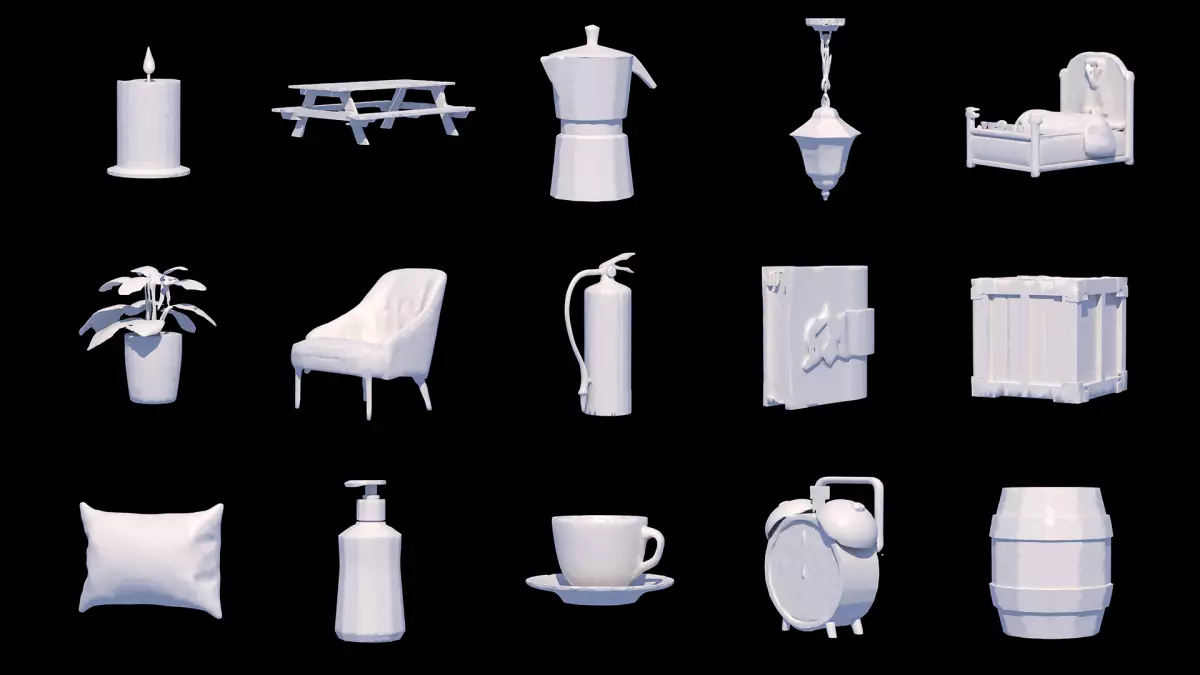Roblox, the monumental platform that has allowed millions to unleash their creativity, is stepping up its game with the introduction of a groundbreaking tool named “Cube”. This innovative platform harnesses the power of generative AI to enable creators to bring their visions to life in 3D. Announced during Roblox’s annual developer conference and set for demonstration at the Game Developers Conference (GDC), this initiative signals a significant shift in how digital environments and objects are crafted. With Cube, creators can merely input a text prompt, such as “create a blue dragon with glimmering scales,” and witness the magic of instant 3D modeling.
The Power of Open-Source AI
One of the most noteworthy features of Cube is its open-source architecture. Unlike many proprietary tools, providing a framework that anyone can tweak and develop further opens a realm of possibilities. Developers off the Roblox platform can utilize Cube to create custom plugins or even train the model using their own datasets. This not only democratizes the creation process but also fosters a collaborative ecosystem where innovation is not restricted to a select group of users. By making Cube accessible to a larger audience, Roblox is encouraging a culture of creativity that could lead to unforeseen breakthroughs.
Introducing Next-Gen Features
In addition to mesh generation, which simplifies creating 3D objects, Roblox is rolling out an impressive suite of AI-based capabilities. These include text generation, text-to-speech, and speech-to-text functionalities. The text generation tool invites a new level of interactivity, enabling players to engage in conversations with non-player characters (NPCs). Imagine the depth added to a game when players can hold meaningful dialogues with NPCs, enhancing immersion like never before.
Furthermore, the text-to-speech feature allows developers to incorporate realistic narration, giving their creations a larger-than-life feel. This progressive shift towards multimedia experiences emphasizes the importance of voice in digital interactions. Meanwhile, speech-to-text capabilities grant players seamless control—issuing directives using their own voice adds a layer of dynamism to gameplay that traditional controls can’t replicate.
Future Expansion: Towards 4D Creation
Roblox has big plans for the future, with aspirations to introduce even more complex 3D mesh generation and scene creation tools that bring entire environments to life. The vision extends toward what Roblox describes as “4D creation,” illustrating their goal of interactivity between objects, environments, and users. This ambitious goal places Roblox at the forefront of technological advancements while acknowledging the social aspects of gaming. As Nick Tornow, Roblox’s VP of Engineering, elucidates, the essence of these endeavors is to elevate interaction and create a richer, more engaging experience for users.
Navigating Industry Concerns
However, the rise of AI technologies in gaming does not come without its challenges. While these tools are designed to empower creators, there are legitimate concerns regarding job displacement in the gaming sector. A study by CVL Economics indicates that a substantial percentage of gaming jobs could be susceptible to AI advancements. This raises questions about the implications of such transitions—how can the industry embrace innovation while safeguarding opportunities for traditional roles?
It is vital that as Roblox pioneers AI-driven tools, it also addresses these socio-economic concerns head-on, ensuring a system where both technology and creative careers can flourish alongside each other. By fostering education and adaptation in the workforce, the gaming community can move forward without leaving valuable talent behind.
Roblox’s introduction of generative AI tools represents a paradigm shift in the way 3D content is created and interacted with. As Cube prepares to reshape the landscape of game development, it paves the way for creators to harness advanced technologies, encouraging them to think outside the box. This transformation empowers independent developers to tackle larger projects while fostering unique collaborative opportunities through its open-source nature, however, it necessitates a careful balance with the workforce realities within the industry. The unfolding narrative of AI in gaming is not just about technology; it’s about the next generation of creators pushing boundaries and shaping the future of play.

